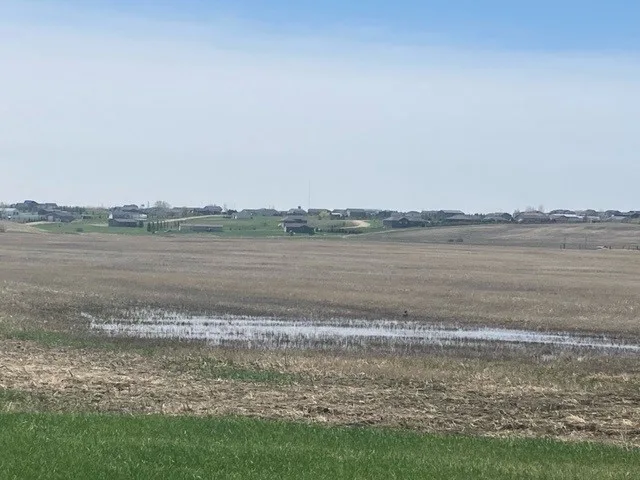

Help with Drought, Harmful with Mud
MINOT – The couple days of rain this past weekend is both good and bad for farmers, says North Central Research Extension Center’s Cropping Systems Specialist Leo Bortolon. While rain is good for drought relief, too much of it at once can make fields too muddy to plant, even if the land is still considered dry in some areas.
Bortolon said the planting season this year has been low pace due to the long winter and moisture the north central region of North Dakota has been getting.
“The fields are wet,” said Bortolon. “This past month the soil temperature was not high enough to put down some crops in the field.”
Now the large downpour the north central region received this past weekend is adding to the mud in the fields, making it harder for farmers to enter the fields at all to plant or spray.
Bortolon said farmers will need to revisit their seeding rates, especially for small grains. A seeding rate is the number of seeds planted per hectare.
“They can take advantage of nitrogen management too,” said Bortolon. “After we plant the small grains, like wheat, oats, barley, we have at least 30 days after planting to apply nitrogen.”
Another problem when rain comes is it hinders a farmers ability to control weeds.
“The weeds are coming, especially Kochia,” said Bortolon.
Bortolon said many farmers have to use pre-emergent herbicide to control weeds, especially the very herbicide-resistant Kochia weed that has become an ever-existing issue in the region.
“The rain is giving the perfect condition for Kochia to grow,” said Bortolon.
On the bright side, Bortolon said because the north central region requires a lot of rain for the crops to grow, the recent rain is a good thing. The north central region has been fluctuating between no drought and abnormally dry, as can be seen on this map. The map was updated this past Thursday and will most likely look much better when it is updated this Thursday again, due to the rain this past weekend.
“This moisture that we got, it will push the planting days a little further, but the bright side is we’re going to have plenty of moisture for the crops,” said Bortolon. “Typically July, August is pretty dry for us, so this moisture is well received for us.”
The cons of a downpour are that farmers cannot enter the fields for operations, making weed control harder as some herbicides are hard to apply with an airplane.
“But I prefer to look at the bright side of everything,” said Bortolon. “As an optimistic and positive person, I prefer to have the mindset that all this moisture that we get, we’re going to take advantage of it during the growing season.”
The sun and wind will be helpful in drying out the mud, says Bortolon, while still keeping moisture in the ground for the crops.
Some farmers are currently planting, and the rain will be good for those crops that are already in the ground.
“We are in very good shape compared to 2021,” said Bortolon. “We are blessed. If you look at the growing conditions of last year to this year, it’s quite similar.”
Farmers last year planted around the second week of May, similar to this year. Much of the moisture was due to the big snow storm in April of 2022.
“We are probably going to have the same pattern as last year,” said Bortolon.